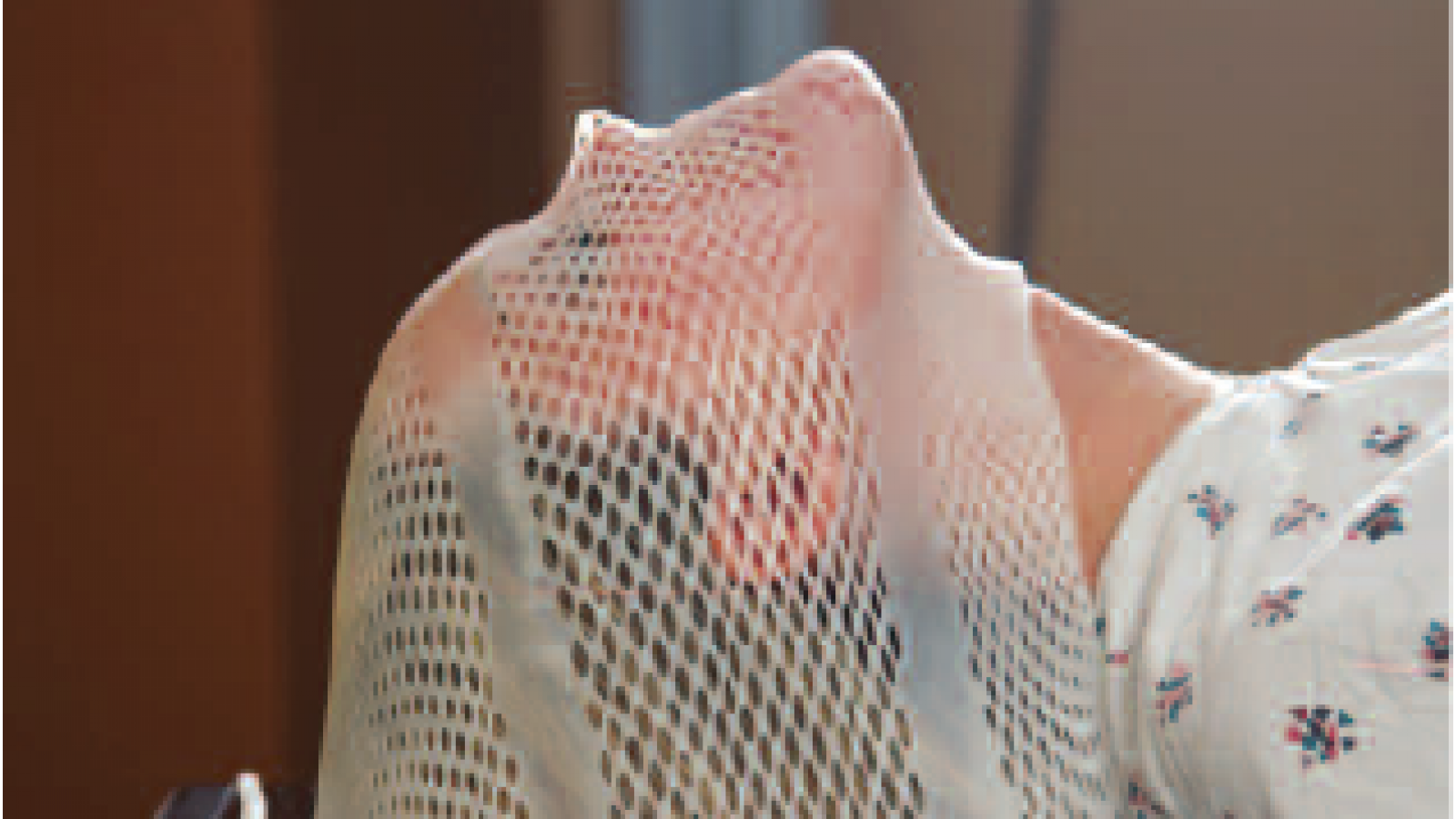Radiotherapy masks and other immobilisation devices

Immobilisation devices help to keep you in the right position every time you have radiotherapy treatment. There are different types, depending on which part of the body is being treated.
Masks
If you are having radiotherapy to your head or neck, you may need to wear a mask during treatment. The mask can be made from either clear plastic (Perspex) or a type of mesh plastic (thermoplastic).
Perspex mask
The mould room technician will put some cream on your face. They then put strips of plaster of Paris bandage on top of this to make a mould. This takes a few minutes to set and is then removed. A Perspex mask is made from this mould.
Thermoplastic mask
This uses a type of mesh plastic that becomes soft and pliable when heated in warm water. The warm plastic is draped carefully over your head. It will feel like a warm face cloth placed over your face at first but it cools very quickly. The holes in the plastic will allow you to breathe easily through it. The radiation therapist and mould room technician mould the plastic to the shape of your head as it cools.
Dental mouth bite
To make a dental mouth bite, you will be asked to bite into a plastic mould full of putty. This mould is like a gum shield. The putty will dry in 10 minutes and make a mould of your upper teeth. The radiation therapist will then attach a small frame to your mould. They might ask you to remove your mouth bite a few times to check that it fits correctly.
Body mould / ‘Vac bag’
You will be asked to lie down and hold your arms above your head. You will then lie on a bag (like a bean bag) the length of your body. Once you are comfortable and in the correct position for treatment, a vacuum will be attached to the bag and the air sucked out. This will make a mould around your body so that you are always in the same position for your planning and treatment.
Head frame
A head frame is used for intracranial stereotactic radiosurgery. A circular metal frame is held in place by four attachments that line up with your skull. Two are in your forehead and two are in the back of your head. Your neurosurgeon (specialist brain doctor) will put your head frame on. An anaesthetic will be used to numb the skin where the frame will be attached. You will feel some pressure at first but you should not feel any pain.
For more information
Phone
1800 200 700


